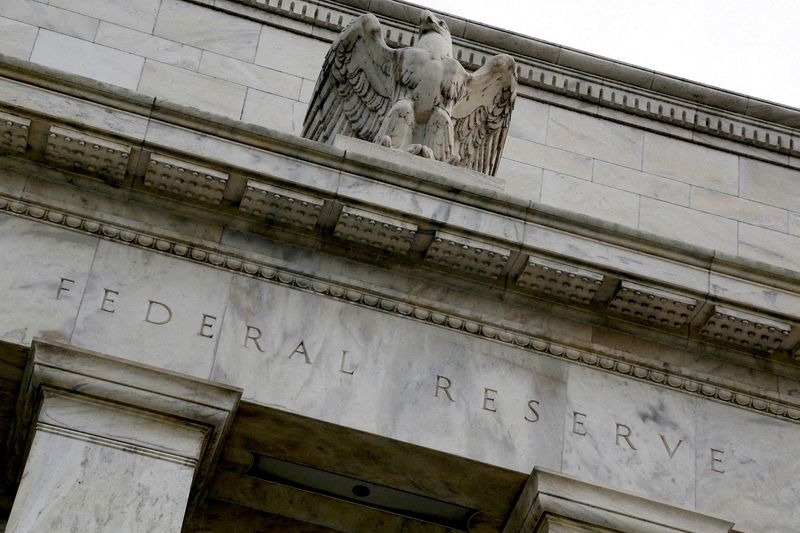By Howard Schneider
WASHINGTON (Reuters) - U.S. Federal Reserve policymakers are expected to cut interest rates later this year, but like any policy turn made outside of a crisis the shift is evolving over time.
Fed Chair Jerome Powell oversaw a prior pivot to rate cuts in 2019. While circumstances are different - inflation at that time was below the Fed's 2% target and policymakers wanted to increase it, not contain it by slowing the economy - their language changes then may show how Powell and his colleagues could come to characterize their plans.
DECEMBER 2018: MORE HIKES? NOT SO FAST
As of December 2018, the Powell-led Fed was expecting to push ahead with the rate hikes that had continued over two years of stronger-than-expected economic growth.
Markets rebelled after the central bank followed through with a quarter-of-a-percentage-point hike at that month's meeting and said "some further gradual increases" would likely be needed. Powell's comment in a press conference that reductions of the Fed's massive balance sheet would stay on "automatic pilot" added to the sell-off in financial markets and the pressure on the central bank to shift gears in an economy felt to be weaker than policymakers acknowledged.
JANUARY 2019: A 'PATIENT' FED
At its first meeting of 2019, the central bank put its policy stamp on an approach Powell already had flagged in public comments.
The U.S. unemployment rate remained low, inflation was tame and while the economy had slowed near the end of 2018, it grew as a whole by 3% that year, the fastest annual reading since 2005.
The central bank's Federal Open Market Committee (FOMC) said in its policy statement that it saw "sustained expansion of economic activity, strong labor market conditions, and inflation near the Committee's symmetric 2 percent objective as the most likely outcomes."
But it pointed to the background context of risks from then-President Donald Trump's trade wars, announcing that its bias had shifted from tightening.
"In light of global economic and financial developments and muted inflation pressures, the Committee will be patient as it determines what future adjustments to the target range for the federal funds rate may be appropriate," it said.
Many analysts expect a comparable shift to a neutral policy stance at the conclusion of the Fed's latest two-day meeting on Wednesday.
JUNE 2019: 'UNCERTAINTIES' AND RISK
The policy direction remained unchanged at the Fed's March 19-20 and April 30-May 1 meetings in 2019, but new language in the statement issued after the June 18-19 meeting said while ongoing growth was the baseline outlook, emerging risks put the central bank in a different posture of possibly having to defend what it regarded as a healthy status quo.
"Uncertainties ... have increased," the FOMC's statement said.
It then went on to spell out the logic of coming rate cuts: "In light of these uncertainties and muted inflation pressures, the Committee will closely monitor the implications of incoming information for the economic outlook and will act as appropriate to sustain the expansion, with a strong labor market and inflation near its symmetric 2% objective."
JULY 2019: SUPPORTING GROWTH
The Fed acted at its July 30-31 meeting, cutting its policy rate by a quarter of a percentage point, a step that it said supported an ongoing economic expansion in light of continued "uncertainties."
No firm commitment to further cuts was made, but officials pledged to "act as appropriate to sustain the expansion."

The economy indeed remained on track until the COVID-19 pandemic struck in early 2020, the sort of outside shock that has derailed the last three expansions.
In the current environment the Fed may shy away from language about stimulating the economy and instead characterize cuts as accommodating slowed inflation. The potential for a growing gap between the inflation rate and the Fed's benchmark overnight interest rate, currently set in the 5.25%-5.50% range, means the central bank may in effect be further tightening borrowing conditions if it doesn't cut rates.